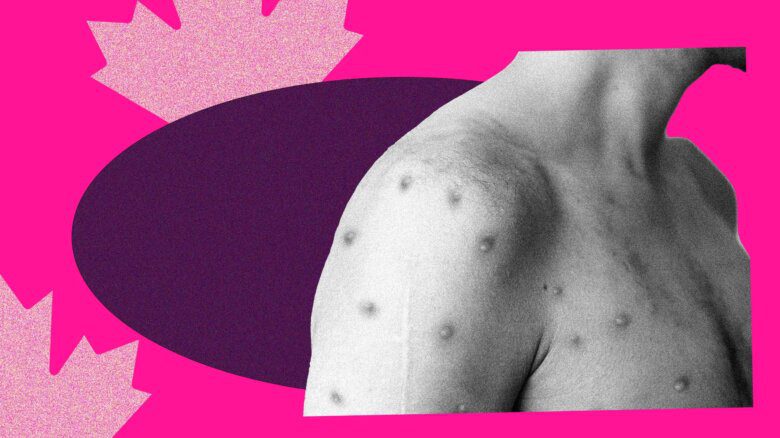Jules Levin doesn’t want to be congratulated on getting older. It’s true that he has long outlived the lifespan anyone would have expected when he was first diagnosed with HIV 35 years ago—but now, at 70, Levin, who directs the National AIDS Treatment Advocacy Project, has multiple medical problems and needs assistance to make it through each day.
While the antiretroviral therapy (ART) first made widely available in 1996 prolonged the lives of millions of people with HIV, including Levin’s, “The promise and hope of that is now gone for many of us,” Levin says. “We never anticipated what we’re facing now.”
One-fifth of the HIV-positive population in parts of Europe and North America—and about half of the United States’—is over 50. As life-prolonging medication becomes increasingly available and effective, the proportion of older adults among those living with HIV is expected to increase. “It is definitely an aging population, which of course is a great thing because these are individuals who have survived and are not dying,” says David Hardy, a Los Angeles infectious disease doctor and researcher who has cared for people with HIV since 1982.
“We never anticipated what we’re facing now.”
But while the lifespan of people living with HIV has dramatically improved, what Hardy calls the “healthspan” has not. People living with HIV, he says, “Can probably count on the fact that they will have a higher prevalence of certain non-communicable diseases such as cardiovascular disease, potentially renal disease, liver disease—especially if they have a chronic hepatitis infection—neurologic disease and probably bone disease, too.”
These health problems are recognizable to many health professionals as common afflictions of older adults but, Hardy says, people living with HIV are developing them at higher rates than their HIV-negative counterparts of the same age. However, the degree to which HIV acts as a risk factor for chronic conditions that predict poor health or itself accelerates the aging process—or does both to varying degrees—remains an unanswered question.
A multitude of studies have suggested people living with HIV are thought to have an elevated risk of cardiovascular disease (like high blood pressure, heart attack and stroke), diabetes, neurocognitive impairment, liver disease and low bone mineral density. In one study comparing people over 45 living with HIV to their HIV-negative counterparts, people living with HIV had more chronic diseases in every age group.
The trouble with most of these studies is that they are based on information gathered from people living with HIV who probably have some physical differences to people who get diagnosed with HIV today. Some of these differences may be due to biomedical advances: The medications available to treat HIV today have far fewer toxic side effects than the ones available to people diagnosed in the earlier days of the epidemic, and advances in diagnosis and treatment access globally and in North America have translated to fewer people living with untreated HIV.
“In one study comparing people over 45 living with HIV to their HIV-negative counterparts, people living with HIV had more chronic diseases in every age group.”
These advances are important because taking certain HIV medications and having a history of severe HIV infection (marked by a low number of CD4 cells, which are a critical part of the immune system) are associated with certain chronic diseases like high cholesterol, diabetes and neurocognitive impairment.
Another layer of complexity is the fact that people living with HIV are more likely than others to engage in behaviours that negatively impact health. Smoking, hazardous alcohol use and recreational drug use are more common among some people living with HIV than among others, Hardy says.
While researchers try to take these behaviours into account when identifying the causes of age-associated health problems in people with HIV, they don’t always have enough information to do that in a highly rigorous way. That’s because answering questions about HIV and aging usually involves looking at large sets of data collected for other purposes.
Researchers in these scenarios often do not control the data collection, and people who drop out of the study are sometimes not included in these analyses—these factors mean many different types of bias creep into the research process. (Differences among data sets and the methods used to analyze them account for many of the differences in life expectancy and disease estimates for people living with HIV.)
“The final answer is really not in yet,” Hardy says.
It does seem that the HIV virus itself likely plays a key role in creating the physical changes that culminate in higher rates of aging-related conditions. The process starts with inflammation, the release of immune proteins and cells often accompanied by fever, pain, redness and swelling.
In a healthy body, this heightened immune activity is a normal part of the response to a challenge, and plays a critical role in fighting off disease.
But too much inflammation is not a good thing—chronic, low-grade inflammation is thought to accelerate the cellular aging process, causing blood vessels to be less elastic and networks of tiny fibres to accumulate in the brain, the bones, the liver and other organs, earning it a new name: “Inflammaging.”
An untreated HIV infection is an inflammatory state, and the longer it takes for a person with HIV to begin ART, the more time the body spends in that state, incurring damage that might be irreversible. Once a person begins taking ART, the levels of the HIV virus decrease to undetectable levels—which scientists have determined means it cannot be transmitted to another person. However, the virus still remains present at very low levels in the body, and ART must be taken daily to keep viral levels low so the immune system can return to its normal functions.
By reducing the amount of HIV virus in the blood, ART dramatically reduces the inflammation HIV causes. But it does not eliminate it entirely. “That level of chronic inflammation—what’s called immune activation—never decreases back to the level of an HIV-negative individual,” Hardy says. The persistent presence of low-grade inflammation in people with HIV may be an important contributor to their elevated risk of aging-associated conditions.
So what can people living with HIV do to maximize their health? For starters, Hardy says, they should quit smoking. Other official recommendations include eating healthy, staying fit and minimizing alcohol and recreational drug use.
“You need a geriatric clinic in every HIV clinic.”
“What I would recommend to my patients is, let’s make sure that the rest of your house is in great shape,” Hardy says. In other words, be as proactive as possible about identifying and addressing problems with high blood pressure, kidney and liver function, memory and cognition, hyperlipidemia (including high cholesterol) and other common age-associated physical problems.
Doctors caring for people living with HIV should consider screening for aging-associated conditions earlier than they otherwise might, says Hardy. For example, people living with HIV should get bone scans beginning at age 50—15 to 20 years earlier than the rest of the population.
The anti-inflammatory effects of aspirin and statins have raised interest in terms of preventive therapy in otherwise healthy people with HIV. Aspirin’s bleeding risks outweigh its benefits in healthy older adults, and it hasn’t been studied well in those living with HIV. However, results from a study expected to be published later this year will hopefully answer the question of whether people living with HIV can benefit from taking cholesterol-lowering statin medications as prevention.
Jules Levin says what people aging with HIV really need is wraparound care. “You need a geriatric clinic in every HIV clinic,” he says. But with the bulk of HIV advocacy focused on expanding things like pre-exposure HIV prevention programs, he says the focus of most activists is elsewhere.
“Finding a cure is kind of a dream and a hope now,” he says. “The aging problem is real and affecting people every day and deserves much more attention.”


 Why you can trust Xtra
Why you can trust Xtra


